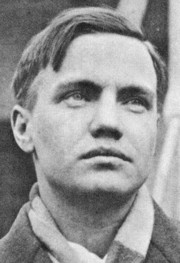SciTech Tuesday: Frequency Hopping and Hedy Lamarr
One hundred years ago today Hedwig Eva Maria Kiesler was born in Austria to a Jewish family. She met Louis B. Meyer in London as he was about to return to the states by ship, and she was fleeing an abusive marriage for a new life in the New World. By the time she disembarked in New York, she was rechristened Hedy Lamarr, and had a contract with MGM. She came up with a patent in 1941 that might have changed the war–but was told she would better help the war effort by selling war bonds. That patent involved an invention so important to current technology that the Electronic Frontier Foundation recognized her with a Pioneer Award in 1997.
Lamarr avoided the movie star party scene, and preferred to spend her time at a drafting table and reviewing technical manuals. Inventing was her hobby, not martinis or late nights at clubs. Her first husband had been a military contractor who used her as an ornament at meetings and while wooing Fascist governments for contracts, so she had become literate about military hardware. In 1938 a story she read about people killed at sea by U-boats, she considered why the British and American Navy was so far behind the Germans. The answer was that our torpedos were inaccurate.
Lamarr had befriended a Hollywood composer with a genius for mechanics. George Antheil had been an avant garde composer, who in 1926 prepared a performance in Paris called the Ballet Mécanique. The composition featured an array of player pianos, accompanied by other instruments. Anthiel made piano rolls to control and synchronize all the pianos. Years later, Anthiel was making his living as a movie score composer, and was a neighbor who Lamarr met at dinner.
Together they considered the problem of the inaccurate torpedos. Perhaps, they thought, the torpedos could receive directional control from the submarines. But then, the pair considered, they would be open to jamming by the Germans. If radio waves were blasted nearby at the same frequency as the torpedo and sub used, there would be too much interference for communication to occur.
Lamarr suggested that the ship and torpedo could shift the frequencies they use sporadically, so that they couldn’t be jammed. The problem then would be how to arrange for the ship and the torpedo to both know when to change and what frequency to use. Anthiel had the solution–a template like the piano rolls he used to keep the array of pianos together in the Ballet Mécanique. In fact, the player pianos had 88 keys, and so he imagined 88 different frequencies that could be used. Together Lamarr and Anthiel submitted a patent application in 1941. The government considered it sensitive enough to not publish the patent details, but approved patent number 2,292,387 in 1942. The Navy though refused to consider a patent from a movie starlet and a composer, and it wasn’t until 1962 that they used frequency hopping to control weapons. Lamarr and Anthiel also created a plan for a proximity detonated bomb.
As I sit at my desk writing this post, I am responsible for a whole bunch of electromagnetic wave generation and reception. My cell phone is using WiFi, cellular and bluetooth, my laptop WiFi, bluetooth and some others, and my remote mouse bluetooth. The only way that this all can happen without (too much) interference is Lamarr and Anthiel’s way–frequency hopping. It is true that others had considered frequency hopping before Lamarr and Anthiel, but they provided a mechanism for sharing a key, and a model that others picked up later to develop radio communications technology.
A quote attributed to Lamarr suggests she felt some bitterness at the lack of recognition of herself as something other than an object of beauty: ” Any girl can be glamorous. All you have to do is stand still and look stupid.”
Next week we’ll return to the Manhattan Project.
Posted by Rob Wallace, STEM Education Coordinator at The National WWII Museum
All photos from Wikimedia Commons






Leave a Reply